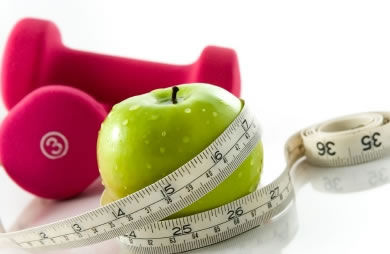|
You're gaining weight and your baby is too, weighing over 5 ounces (.14 kg), and measuring more than 5 inches (13 cm) in length. What an adorable pair you are! .jpg)
Baby's rapid growth period is beginning to slow down, but his or her facial features are starting to form. Your baby can now yawn, frown, smile, and make other facial expressions. Taste buds have developed, and your baby can sense bitter from sweet, and swallowing reflexes are now present. He or she may even start getting the hiccups! Because baby's eyes are still developing, they're very sensitive. If a light is shined onto your belly, your baby might flinch and try to cover his or her face. Your Body This Week Now that your uterus is about the size of a cantaloupe, you may begin to experience backaches. A shift in your center of gravity (upward and outward), along with increased hormone production, can cause some joints to loosen. As a result, you're more prone to twisting your ankles or wrists, so take care when exercising. Your heart is working about 50% harder now, so don't be surprised if you feel a bit out of breath. Am I Gaining Enough Weight? As you get further into the second trimester (already?), it's a good time to revisit your weight goals and make sure you're gaining at a healthy pace. Remember, pregnancy is NOT the time to diet. While you should always watch what you eat, the most important consideration is that your baby gets enough energy and nutrients to grow. In the second trimester, a normal weight woman should gain an average of about 1 pound per week. Underweight women should gain about 1/2 pound more, overweight women about 1/4-1/3 pound less. Of course, you should always discuss weight issues and strategies with your doctor. Review BabyFit's weight gain guidelines. Exercise Your Right To An Easier Labor If it hasn't already, your mind may soon be turning to the realities and worries of labor and delivery. With these thoughts may come some fears about pain and complications. Wouldn't it be nice to find a way to reduce both? There is! By exercising and familiarizing yourself with this term: pelvic floor. Studies show that developing the pelvic floor and body core through specific exercises leads to shorter, easier labors, particularly within the pushing stage. Kegel exercises are the most famous, but other options can help as well. Learn how exercise is the secret to easing labor pain. |
Week 18: Work Pelvic Floor to Ease Labor
Your Week-by-Week Guide to Pregnancy
Page 1 of 1





Member Comments